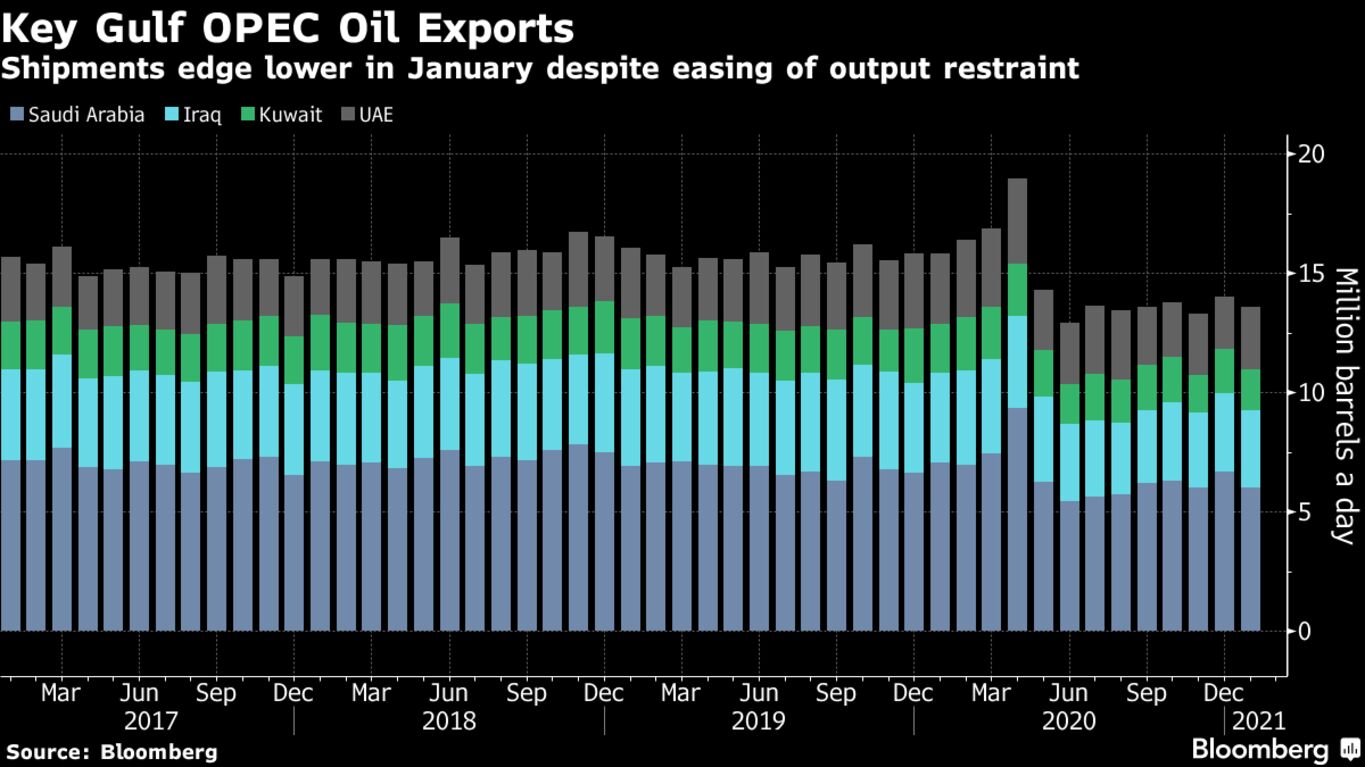Oil shipments from OPEC’s Persian Gulf producers slipped last month, even as output restrictions were eased and production volumes increased. Combined shipments of crude and condensate — a light form of oil extracted from gas fields — from Saudi Arabia, Iraq, the United Arab Emirates and Kuwait were almost 430,000 barrels a day lower in January than in December. The UAE was the only one of the group to boost shipments last month, vessel-tracking data monitored by Bloomberg show.

The four Persian Gulf nations shipped a total of 13.59 million barrels a day of crude and condensate last month. With 29 million barrels, equivalent to about 940,000 barrels a day, on ships yet to signal a final destination, the volumes delivered to individual countries could rise significantly.
Kuwait cut exports by 9% in January, the data show. The drop may be related to the commissioning of the country’s new Al Zour refinery, which took its first crude delivery in December.
Iraq’s crude exports fell by a modest 1%, or 24,000 barrels a day, far short of the drop that would have been needed for the country to meet its own target to slash oil output to a six-year low and make up for breaching its OPEC quota.
In contrast, flows from the UAE rose by 440,000 barrels a day, or 20%, to reach their highest level in five months.
Observed flows from Iran have been excluded, as most of the country’s tanker fleet remains hidden from tracking.
Shipments from the four Gulf nations to China, based on preliminary destination signals from tankers, fell by 350,000 barrels a day, or 9%, reversing almost half of the increase seen in December. Kuwait was the one country that saw increased shipments to the world’s biggest crude importer, though flows from other countries may be revised higher as more vessel destination information becomes available.

India was the only major Asian destination for Persian Gulf OPEC crude that saw a month-on-month increase in flows in January. Shipments to the region’s closest major customer jumped by 290,000 barrels a day, or 12%, to reach their highest level since March and were above their 2019 average for the first time since April, as the pandemic started to shrink the country’s imports.

Crude and condensate flows to South Korea fell in January to their lowest level in at least four years. Persian Gulf exporters are facing growing competition from U.S. shippers who sent at least 12 million barrels of crude toward South Korean ports last month, up from 5 million barrels in December. Iraq though raised shipments by 25% to 156,000 barrels a day.

Crude and condensate flows to Japan fell for a second month in January and remain 20% below their 2019 average level. Refiner ENEOS Holdings, formerly known as JXTG Holdings, plans to shut three crude distillation units at its Mizushima B and Chiba refineries in February for regular maintenance, which may have dampenend the appetite for crude imports.
